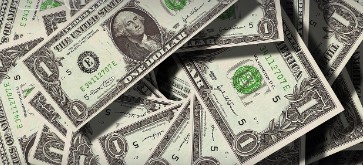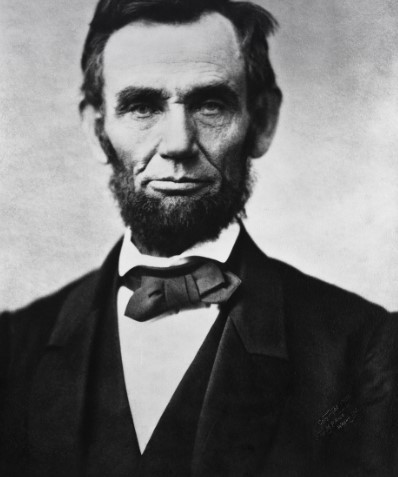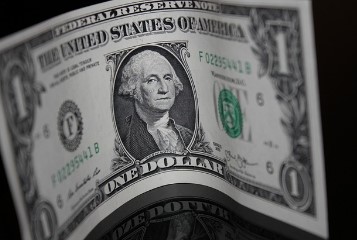PRESIDENTS ON MONEY: FORMER PRESIDENTS ON THE US CURRENCY

PRESIDENTS ON MONEY
Presidents on money is a history of U.S. currency and the notable personalities depicted on it. The United States dollar was established as the official currency of the United States in April 1792. People are starting to care about who they’d like to see featured on their currency as a reflection of the country’s dynamic identity.
American paper bills and coins are currently under consideration for redesign in order to include a broader range of historical individuals and symbols that have contributed to America’s identity. Aside from the $20 bill, which will feature Harriet Tubman’s likeness in 2028 (the decision is still pending), other potential changes to the currency include bald eagle coins in gold and silver, pictures of Marian Anderson’s opera concert from 1939, a portrait of Eleanor Roosevelt on the back of the new $5 bill, and images of Martin Luther King Jr.’s I Have a Dream speech.
The Treasury revealed that Sojourner Truth, Lucretia Mott, and Susan B. Anthony will be depicted on the back of the $10 bill.
Below is a list of the individuals and distinctive characteristics that symbolize the U.S. currency as of 2019, ranging from the penny to the $100 bill, regardless of whether all or part of these modifications occur.
Nickel — Thomas Jefferson
The Jefferson Nickel was designed by Felix Schlag, the winner of a competition organized by the U.S. Mint, and was first minted in 1938, replacing the Buffalo Nickel. Since its manufacture, this currency has remained one of the most popular coins in circulation. One side displays Jefferson’s face with the words “In God We Trust” and “Liberty,” while the other side features a portrait of his Monticello property, along with the words E Pluribus Unum, “United States of America,” and “Monticello,” among other unique features.

Penny — Abraham Lincoln
The Lincoln penny was minted and released in 1909 to commemorate the 100th anniversary of President Abraham Lincoln’s birth. Created by Victor David Brenner, this coin was the first to have a portrait and the first to include the slogan “In God We Trust.” Two wheat heads are positioned on either side of the denomination and the words “United States of America” are on the back of the coin.
At the top is the Latin phrase E Pluribus Unum, which means “One out of many.” The Lincoln picture is the only presidential portrait on a coin that faces to the right without any specific explanation.
Quarter — George Washington
The Washington quarter dollar was coined in 1932 to commemorate the bicentennial of the first president’s birth. The bicentennial committee first proposed a temporary Washington half-dollar to replace the Walking Liberty half-dollar. However, Congress intervened and abandoned the half-dollar idea, opting instead for the permanent replacement of the Standing Liberty Quarter with the Washington Quarter. The committee favored sculptor Laura Gardin Fraser’s version of Washington’s portrait, but Treasury Secretary Andrew W. Mellon finally selected sculptor John Flanagan’s design.
On the front side, “United States of America” is above Washington’s picture, with the denomination indicated below. On the left side is the word “Liberty,” while on the right side is “In God We Trust.” Since 1999, the reverse side showcases the America the Beautiful Quarters series, which honors the 50 states, National Park sites, and other U.S. authorities.
Dime — Franklin D. Roosevelt
The Franklin D. Roosevelt dime was promptly designed and produced in 1946 to commemorate FDR’s death, replacing the Mercury dime that had been in circulation since 1916. Roosevelt led the nation during the Great Depression and most of World War II. The Roosevelt dime was released to memorialize his struggle against polio, which he was diagnosed with in 1921 and led to the formation of the March of Dimes.
The Roosevelt dime, created by Chief Engraver John R. Sinnock, has the president’s face alongside the word “Liberty” on the left and “In God We Trust” below. On the flip side, there is a liberation flame encircled by olive and oak branches, representing peace and victory. Displayed behind is the phrase E Pluribus Unum.
$1 bill — George Washington

The standardization of currency for the country’s economic stability occurred with the Federal Reserve Act of 1913. By that time, most of the design elements of the $1 bill had already been established, including its color, borders, and wording, as they had been in use for a long time.
The $1 bill, one of the earliest U.S. currency designs currently in circulation, displays George Washington’s picture on the front, based on Gilbert Stuart’s Athenaeum Portrait, and the Great Seal of the United States on the back. The former design was introduced in 1963, whereas the latter originated in 1935 and was primarily used to prevent counterfeiting. This dual-sided design was utilized during the transition of the $1 bill from a Silver Certificate to an official Federal Reserve Note.
$1 coin — Sacagawea
The Sacagawea dollar coin, designed by Glenna Goodacre, featuring the Native American woman with her young son, Jean Baptiste, entered circulation in 2000. Thomas D. Rogers, Sr. designed the reverse side of the coin, which showcases an American bald eagle in flight. The dollar coin, known as the “Golden Dollar,” does not contain any precious metal despite its name.
$10 bill — Alexander Hamilton
Before Alexander Hamilton appeared on the $10 dollar, other prominent figures such as politician Daniel Webster, explorers Meriwether Lewis and William Clark, and President Andrew Jackson were included. Since 1929, Alexander Hamilton has been the preferred politician, and the portrait commonly seen today is derived on an 1805 painting by John Trumbull. Hamilton, the first Treasury Secretary of the nation, is one of two individuals who are not presidents to appear on U.S. paper currency, the other being Benjamin Franklin. Hamilton’s face is on the front, while the U.S. Treasury Building is on the back.
In 2015, it was reported that a female figure would replace Alexander Hamilton on the $10 bill in 2020, despite the addition of new security features including watermarks and color-shifting ink. Due to the immense popularity of the Broadway musical Hamilton, the administration rescinded its decision and decided to retain Hamilton on the bill.
$5 — Abraham Lincoln
Before Abraham Lincoln’s image was initially featured on the $5 bill in 1914, seven other figures appeared on the denomination temporarily, including Alexander Hamilton, Chief Onepapa, and James Garfield. Since 1928, Lincoln has been shown on the bill, with the Lincoln Memorial shown on the other side. The latest depiction of Lincoln on the bill is derived from Mathew Brady’s 1864 painting of the president.
The $5 bill introduced its new advanced redesign in 2008. The new design features the color purple, The Great Seal of the United States next to Lincoln’s face, and a row of stars on the front. The reverse of the document prominently displays a bright purple “5” watermark at the bottom right, accompanied by a few yellow 5s at the top right, as part of its security features.
$20 — Andrew Jackson
President Andrew Jackson, who advocated for the elimination of paper currency, would likely find it amusing that his image is included on the $20 bill, or any currency for that matter. He appears on the front of the bill with watermarks and green and peach colors, while the White House is featured on the back. Harriet Tubman was planning to replace Jackson on the $20 bill in 2020, but Treasury Secretary Steve Mnuchin postponed the decision until 2028 due to security concerns. In January 2021, the Biden administration announced its intention to expedite the issuance of the Tubman $20 bill.
$100 — Benjamin Franklin

Benjamin Franklin was a Founding Father, inventor, and diplomat, although he did not serve as U.S. president. Despite never being president, Franklin, along with Hamilton, appeared in a highly sought-after currency denomination starting in 1914. In 2009, a significant redesign included Franklin’s face positioned to the left of a quill pen, inkwell, and the Declaration of Independence, as well as holographic watermarks and black-light technologies. The back of the bill features a picture of Independence Hall in Philadelphia, the first building other than those in Washington D.C. to appear on any denomination.
$50 — Ulysses S. Grant
Since 1913, Ulysses S. Grant, a Civil War hero and the 18th President of the United States, has been shown on the $50 bill. Grant’s selection for this specific denomination remains a mystery to many. On the back of Grant’s photograph is the U.S. Capitol building, however earlier versions included Panama, a merchant, and a battleship. Blue and red colors, microprinted phrases like “Fifty” and “USA” around Grant’s face, and an American flag watermark to the right of him have been incorporated on both sides of the note.
RELATED: KING CHARLES RESCUE: The Health History and Cancer Battle